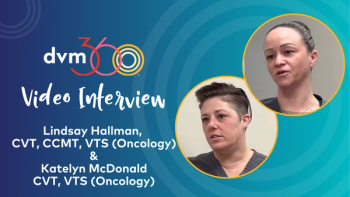
Put your veterinary practice on YouTube. Here's why-and how
Using videos as a social media tool helps you create more emotional connections with clients.
Editor's note: This is the 10th article in a 12-article series.
Did you know the No. 2 search engine in the world didn't exist six years ago? And most people don't even think of it as a search engine. What is it?
YouTube is the very definition of online social media: It's interesting, free, and everyday people create the posts. These people turn to YouTube for entertainment, education, and, yes, even to search for topics normally reserved for googling. YouTube videos allow people to tell their stories in a different way. They add richness to stories that words or pictures alone cannot.
Your veterinary practice should not only start uploading videos to YouTube to promote your services, but also to educate clients. You can begin by creating your YouTube channel. This will give you a home page on YouTube, and allow your clients to subscribe to your channel. This makes it easy for people to easily see your new video posts. The options for creating video for your channel are almost endless. Here are a few ideas to get you started:
• Turn your client education handouts into short video clips
• Create
• Create a video tour of your practice, narrating as you walk through each area
• If you can write a
Creating video and uploading it to the Internet is easier than ever these days. Case in point: Every five minutes, more than 100 hours of video is uploaded to YouTube. Your practice can break into this video revolution with an investment of less than $200. There are portable, easy-to-use, high-definition video cameras available for about $150. With these digital cameras, you can simply point and shoot, plug it into your computer's USB port, and upload your video to YouTube. Some smartphones also offer video capability. In fact, just last week, I was walking through the treatment area when one of the technicians said we were about to begin a c-section. I had my smartphone in hand and went right to work filming the activity as each puppy was delivered. Within one hour, the video was uploaded to our YouTube channel and a link was posted on our Facebook page to share with our clients.
Think of YouTube as the place on the Internet where you store all your videos. You can then link to specific videos through your practice's website, blog, Facebook page, and Twitter posts. (This bolsters your clicks and connections, and also your search engine power. The more links you create on the Internet, the more likely search engines like Google will find your site-so others can find it too.) By including video in your social media strategy, you'll be appealing to a much broader audience and connecting in a more emotional way.
Brenda Tassava, CVPM, CVJ, is a
Also in this series
Article 1:
Article 2:
Article 3:
Article 4:
Article 5:
Article 6:
Article 7:
Article 8:
Article 9:
Article 10:
Article 11:
Article 12:
Newsletter
From exam room tips to practice management insights, get trusted veterinary news delivered straight to your inbox—subscribe to dvm360.





